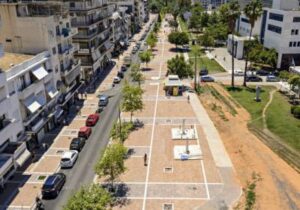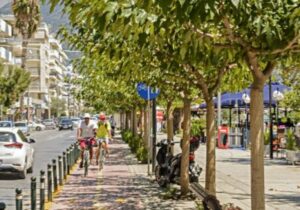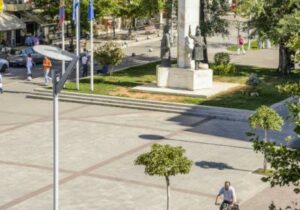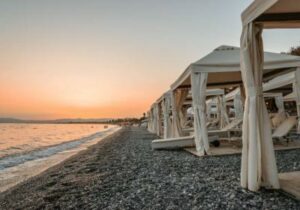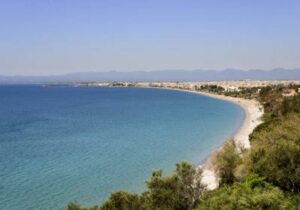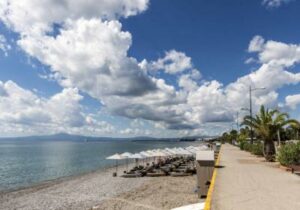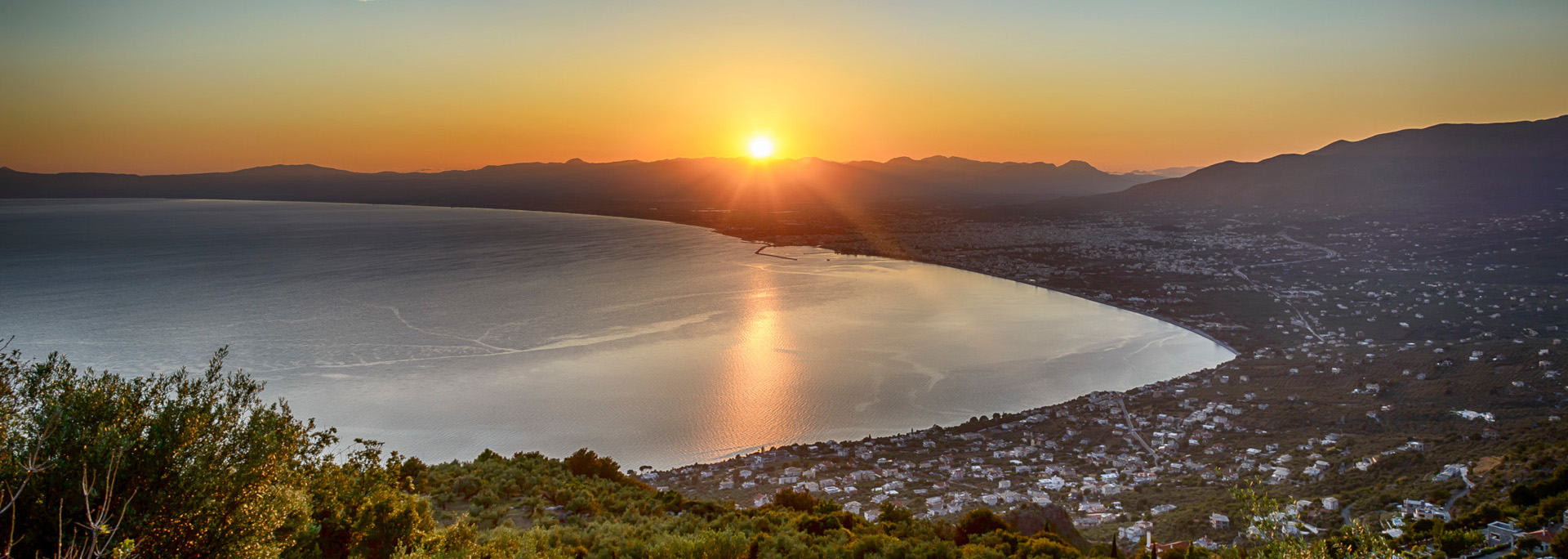
Kalamata Guide
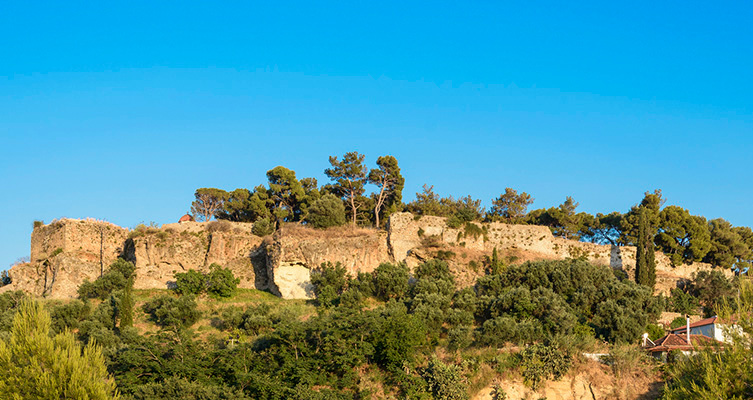
The Castle
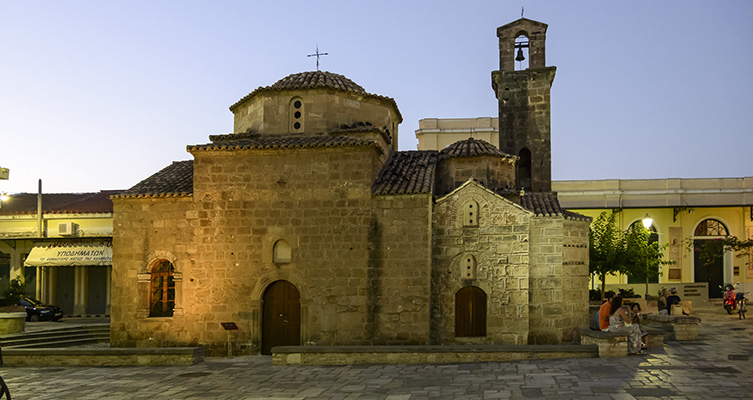
The Holy Apostles
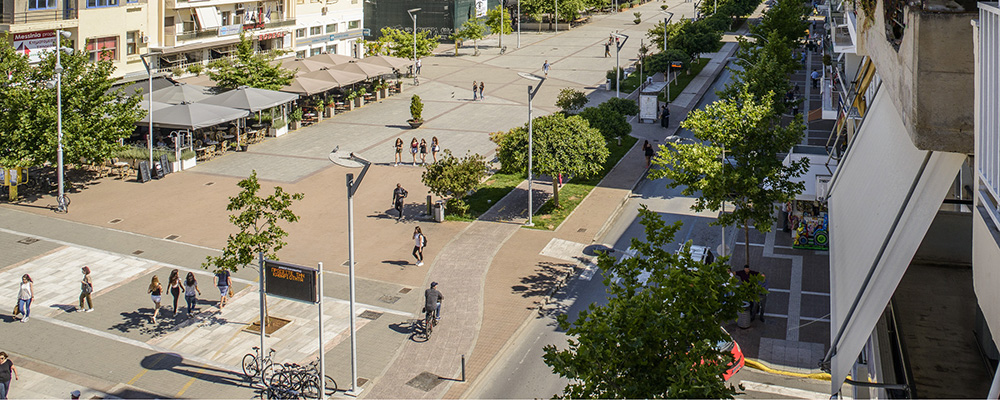
Vasileos Georgiou II Square
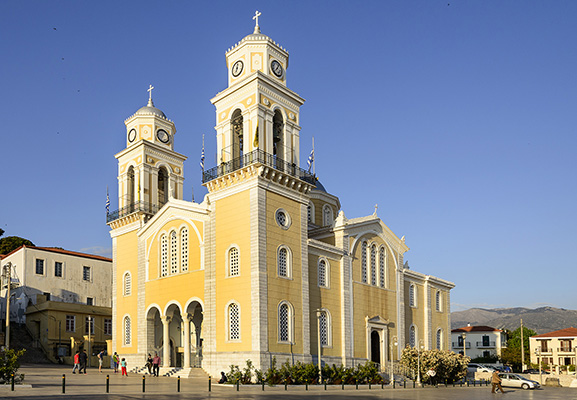
Church of Ypapanti
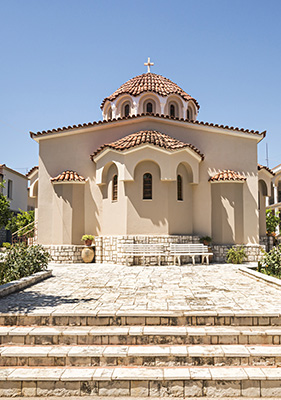
Kalograion Monastery
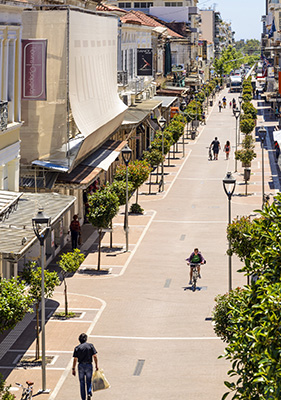
Aristomenous Street
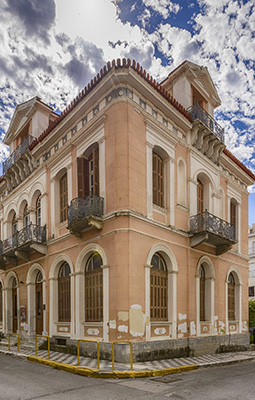
Neoclassical buildings
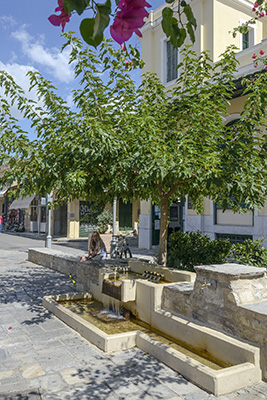
Paplomatadika, 23 Martiou Square
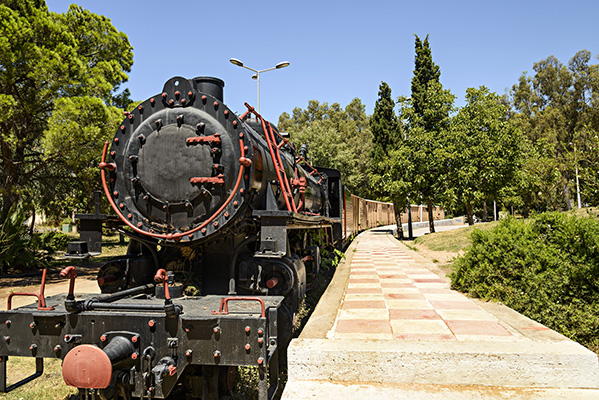
Municipal Railway Park
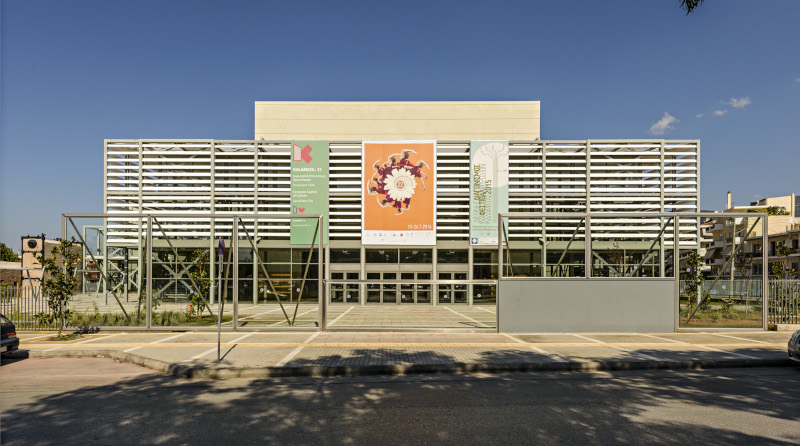
Dance Hall
The central point of the port is Teloneiou (Customs Office) Square, where the prominent buildings ofThe central point of the port is Teloneiou (Customs Office) Square, where the prominent buildings ofthe Customs Office and the Port Authority, a complex of eclectic and neoclassical features, are located.The Port Park, the beginning of Aristomenous street and the Municipal Railway Park are situated justbehind these buildings. West of the square, in just a few minutes walking distance, one can find thecity’s marina, which is a docking place for many boats (private or rented) and the location of manyrestaurants.
On that same side there are two buildings that remind us of the city’s industrial andOn that same side there are two buildings that remind us of the city’s industrial andcommercial past and the time when the port was a nationally significant trade hubbustling with merchants:
- The Autonomous Raisin Organization building, the design of which was based onFrench examples, was erected at a time when the trade of raisins (currants) wasthriving (in the early 20th century)
- The Roller Mills of Messinia “Evangelistria”, which were founded in 1925 and shutdown in 1991.East of the jetty, there is a beach extending for 2.5 km, ideal not only for strollingbut also for swimming in its crystal clear waters.
All along the beach line, on the vibrant, full-of-life (especially during the summerAll along the beach line, on the vibrant, full-of-life (especially during the summermonths) Navarinou street, one can find traditional but also contemporarydining places. There are also many modernly designed hotels, offeringtop-quality services that satisfy all clients’ needs, from simple accommodationto hosting large conferences.
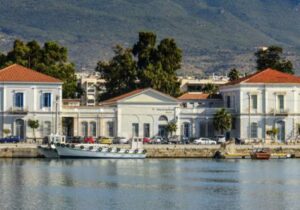
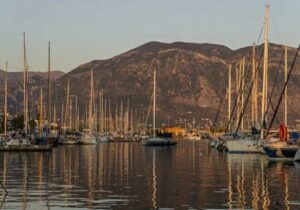
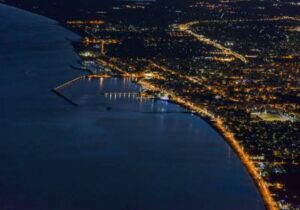
From the port one can walk towards the center of Kalamata, following the broad red-paved sidewalk of Faron street, which is part of a 5.5 km long pedestrian walkway that runs through the city. Useful signs help pedestrians reach the center within 20΄. The sidewalk has ramps for facilitating the access of the disabled, as well as benches for taking a walk-break to enjoy Faron street’s beautiful trees and flowers.
One can also reach the city center by walking through the Municipal Railway Park, which can be accessed through the bikeway that runs along the port. Through Faron street and then through Platonos street, or through the Municipal Railway Park, visitors will reach Aristomenous street, the busiest and most commercial street of the city. By following it towards the north, visitors will reach the shopping district, where dozens of stores offer a great range of clothing, shoes, jewelry, cosmetics, top-quality local products etc. at affordable prices. The street has many cafés, restaurants and places for ouzo and meze.
The Historic Center is located north of the shopping district, around the Holy Apostles Church, and south of the Castle. Wandering through its narrow alleys is like travelling back in time. There, visitors have the opportunity to discover old buildings that survived the passage of time, mansions, stone-built churches, museums, stores that sell local products, cafés, meze places and restaurants.
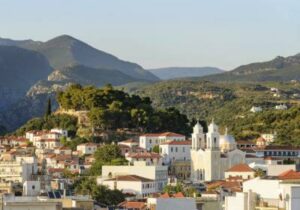
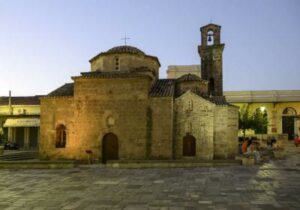
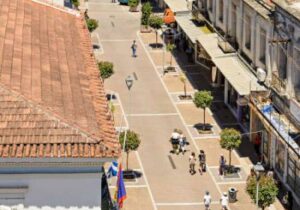
The bikeway of Kalamata is 14,2 km long. It runs through the center and offers an alternative sightseeing experience. It starts from Othonos square and continues through Nedontos street, Vasileos Georgiou II square, Aristomenous street, the Municipal Railway Park and Navarinou street. It ends at the Anastasi Church square by the beach. On Navarinou street, cyclists can enjoy the sea view to the breathtaking Messinian Gulf.
